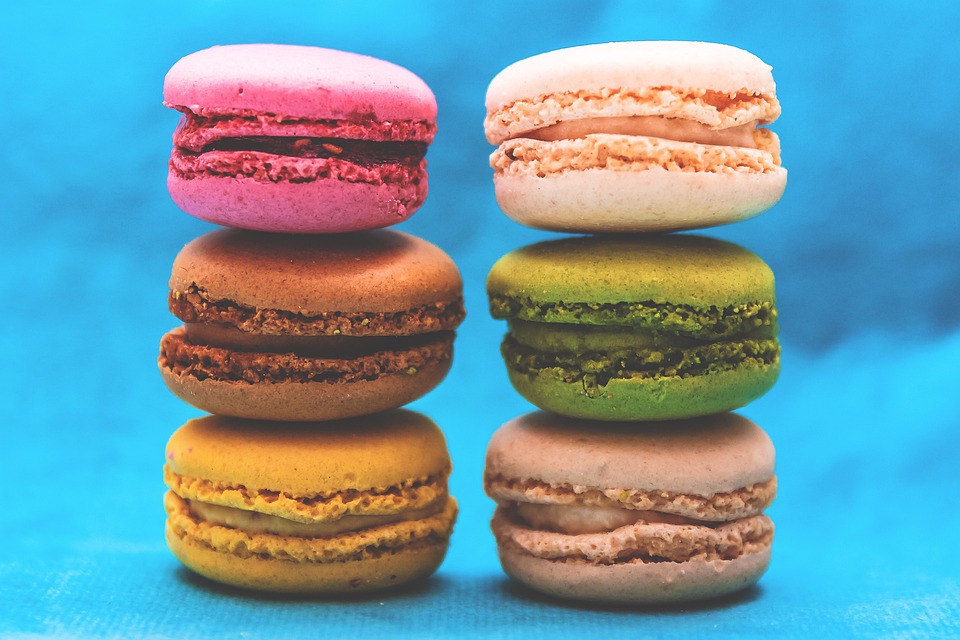Want to Try Macarons?

Want to Try Macarons? A Step by Step guide: A blog around macarons and their recipes.
Introduction
If you’ve ever been to Paris, you’ll know that macarons are the most popular treat in the city. They can be found everywhere, from elegant patisserie windows to street food stalls and even at the supermarket! The reason they are so popular is that they are made with almond flour which gives them a unique texture and flavour. In this article we will show you how to make macarons at home using our step by step guide. You will learn what ingredients are needed for making French Macarons, how to store your finished product and more importantly – how can I avoid common mistakes when baking these magical little treats?
What are Macarons?
Macarons are one of the most popular desserts in France. They are small meringue-like cookies that have a crisp outer shell and a soft, chewy center. Macarons are made with almond flour and powdered sugar, egg whites (or meringue powder), and sometimes lemon juice or cream of tartar to help stabilize the egg whites while whipping them into peaks.
Macarons are best eaten fresh out of the oven because they become stale very quickly once they cool down; however, there are ways around this such as freezing them for up to two weeks before enjoying them later on!
Types of French Macarons
There are three main types of French macarons:
- Pistachio: These have a greenish-yellow shell and usually come in pistachio, vanilla or lavender flavours.
- Almond: Almond is the most common flavour for these with a light brown shell and can be found in many different colours. The same goes for other nuts such as hazelnut and walnut, which can also be used to make this type of macaron.
- Chocolate: Chocolate shells are generally dark brown/black and often filled with ganache or chocolate buttercream (a mixture of butter, icing sugar and cocoa powder). They can also be covered with sprinkles too!
Common Macaron Problems and How to Fix Them
If your macarons are flat, or don’t rise in the oven, it’s not your fault.
There are a few common problems with making macarons that can lead to these issues.
- Over-mixing the batter: This is a big one! If you over-mix your batter it will be too soft, which leads to spreading during baking and hollow centers as well as cracked shells. If you are using a stand mixer like I did before switching to hand beating (see below), try reducing your speed from medium-high down to medium while mixing so that they don’t get overworked before they’re done mixing together properly. After all ingredients have been combined and there are no streaks left behind when you lift up with spatula then stop mixing for about 30 seconds before adding any more ingredients into mixture above.. If you find yourself in this situation where some parts of cookie come away from edge of bowl then add more almond flour until everything sticks together nicely again without falling off edge when lifted out of bowl with spatula—this may take anywhere between 1/8 cup – 1/4 cup depending on thickness of batter). Also make sure not too much butter has melted into mixture before baking since this can cause oily spots on top side surface if baked too long at high temperature.»
Step by Step Instructions for Making Macarons
- Gather your ingredients. You will need:
- 1/2 cup egg whites (about 4 large eggs) at room temperature
- 3/4 cup granulated sugar (200 grams)
- 3 tablespoons water, divided into two equal parts.
How to Store Macarons?
Macarons are best stored in an airtight container. They will keep for up to 1 week in the refrigerator and up to 3 days at room temperature. Macarons should not be frozen, as they can become grainy when thawed out.
This section will give you a few insider tips and secrets on how to make delicious and beautiful macarons consistently.
Macaron baking can be a little daunting if you’re new to it, but there are some tricks of the trade that will save you time and make your macarons look like they came straight from a patisserie!
- Use high quality ingredients. Macarons are made with almond flour (also called almond meal) which can vary in fineness depending on where it comes from. If possible, go for French or Italian blanched blanched almonds as they have less oil than other varieties. This means that the flour produced by these nuts will be finer and produce smoother macaron shells. If you don’t have access to this kind of almond meal, sift through any packaged ones to get rid of any larger pieces before using them in your recipe (although they won’t affect the outcome much).
- Make macarons ahead of time and store them: To make storing these treats easy and convenient, let them cool completely before putting them in an airtight container with wax paper between each layer; this will prevent sticking when stacking them up later on without changing their delicate texture too much! They also taste better after resting overnight at room temperature so try making a batch early in advance if possible!
Conclusion
If you’re looking for the best macaron recipe, this is it! We have spent a lot of time testing, tasting and perfecting these recipes. They are easy to follow with step by step instructions so even beginners can make them.

